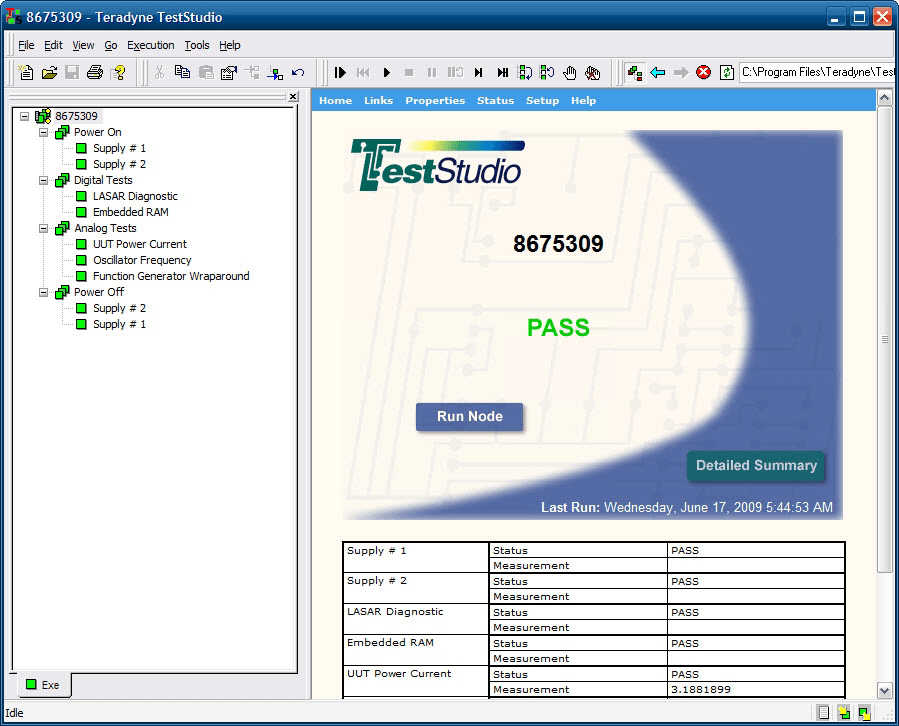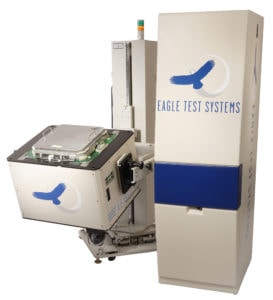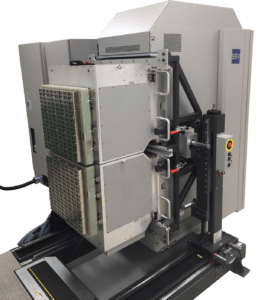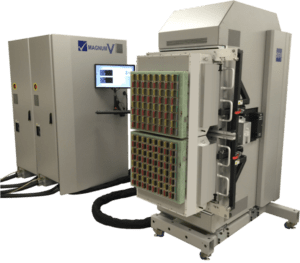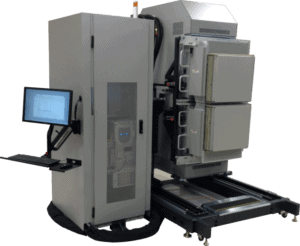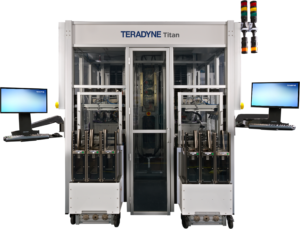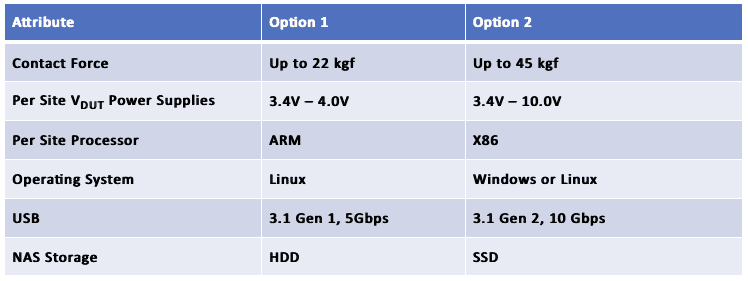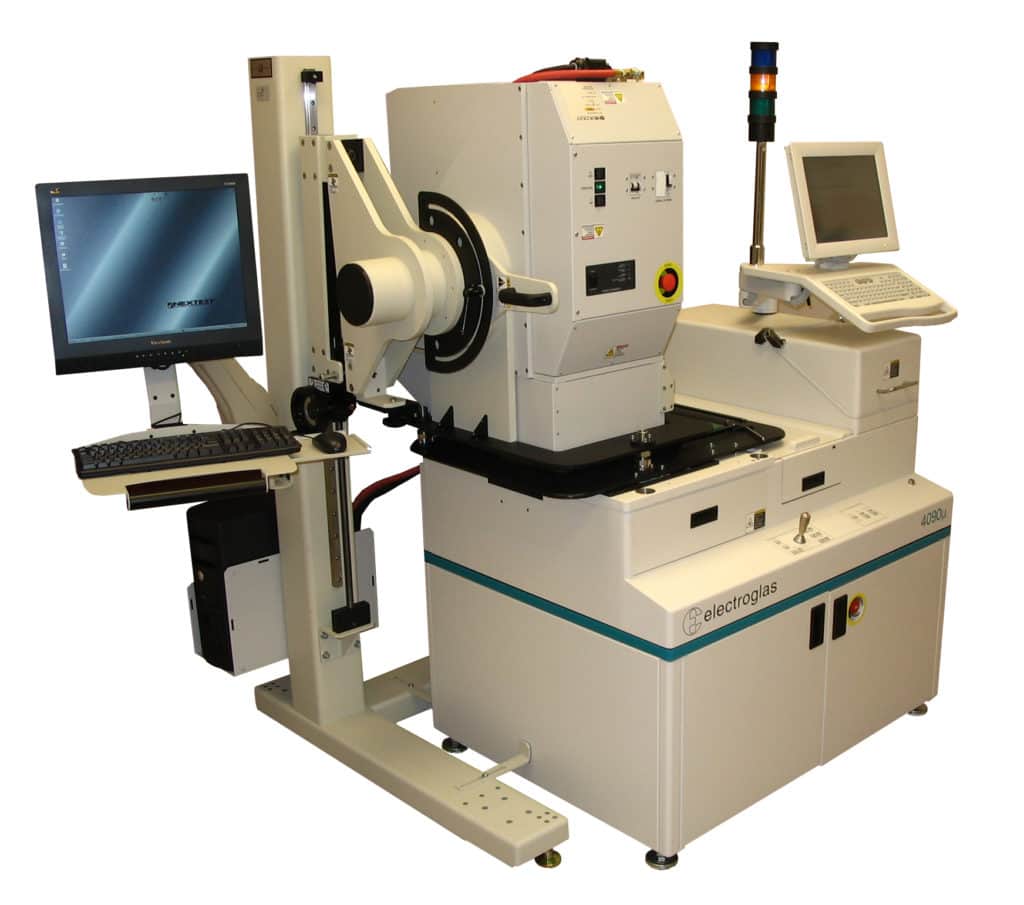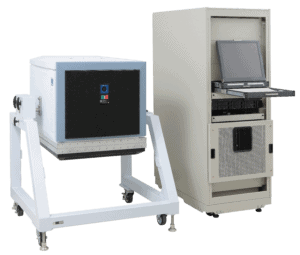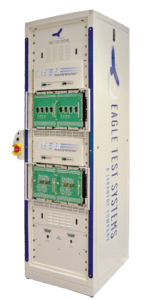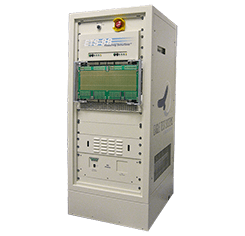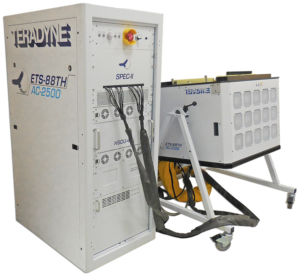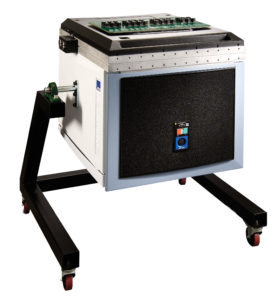Semiconductor components continue to grow in complexity as process nodes shrink. IC designers are now designing complete System-on-Chip (SoC) products that contain core processors, analog I/O, digital I/O, modem and/or other IP blocks along with embedded software. Utilizing System Level Test as a third test process step, following wafer and package test, enables the semiconductor manufacturer to test software and hardware together to validate connections between IP blocks in a manner that isn’t otherwise practical. Titan provides the additional test coverage needed to meet stringent end customer failure rate requirements for improved product quality.
Production Proven Solution
Titan’s asynchronous slot architecture offers unmatched operational efficiency. It optimizes utilization and provides a 30% throughput advantage over traditional batch systems, thereby lowering the cost of test across a large mix of products.
The asynchronous slot architecture also provides the unique ability to test two different products at the same time on the system, while the internal robotics vision system ensures high placement accuracy of the semiconductor device into the test fixture. The test fixture integrates into the system with a high signal integrity interface using ATE style interconnects, providing up to 20Gbps data rates with reliability exceeding over 100k test insertions.
The asynchronous testing capability also enables maintenance to be performed without stopping system operation.
The modularity of the Titan system provides production proven flexibility to test various device package types including PoP, BGA, PGA and LGA. Its flexibility enables customers to integrate existing hardware into the functional rack, slot and/or carrier. This reuse of hardware and software allows for test program commonality, faster deployment of programs and efficient program support.
When product change-over is required, an automated process minimizes the time needed to execute changing the product to be tested.
Titan is offered as either a 320 or 424-site system with the same small footprint, enabling a high number of devices to be tested per square meter of factory floor space.
A smaller 20-site Titan development station is also available for DUT board design verification testing, developing and validating test programs, troubleshooting DUT board HW issues, DUT board test and repair activities, and enabling SLT in non-production environments. This development station allows R&D, QA and Production to use the same DUT test board, enabling a faster ramp to production with a common engineering and production platform.
Want to learn more? Download the System Level Test white paper.
